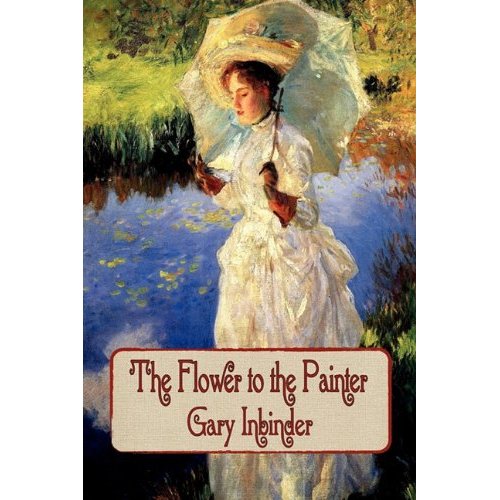Gary Inbinder, The Flower to the Painter
reviewed by Danielle L. Parker
An excerpt of The Flower to the Painter appears in issue 441.

The Flower to the Painter Publisher: Fireship Press, 2011 Length: 277 pp. ISBN: 978-1-61179-161-7 |
The term sacred monster was coined to describe both the genius and the infamous personal peccadillos of Picasso, Dali and others. Some, such as Monet, ruthlessly drained their patrons in support of their Muse (and their personal comforts). Desperate van Gogh begged from tolerant kin. Alas, the Muse rarely supplies bread and butter to even the greatest creative geniuses. To survive, they must turn Art Whore, and pander to the patrons. Attic garrets, watered soup and threadbare clothes rarely encourage even the Muse to make return visits.
Gary Inbinder’s book The Flower to the Painter is set in that wonderful creative period when our most famous artists flourished. Whistler, John Singer Sargent, Renoir and many other famous names stalk the pages of the book. The protagonist of the story is a fictitious female artist. Her focus on first survival and then the glorious pinnacle of artistic success in a male-dominated venue lead her to don drag and become Mark instead of Marcia.
Since Marcia is what would nowadays be referred to as a butch, the gender-bending confusion that ensues as she is courted by various ardent female art patrons is not to her displeasure. But of course, there’s the tormenting question: Will her artistic fame turn to infamy when she’s outed? Will the tender glances of the beauteous ladies flash to horror when this Donatello’s David lookalike reveals she doesn’t possess the expected equipment?
Poor Marcia is on tenterhooks. The wealth she rakes in is hardly a compensation for the celibate lifestyle. She’s living a lie for her Muse and burning with unrequited lust in her lonely bedroom.
Art fans will enjoy the parade of famous names and the art discussion in this book. Others may ponder the philosophical questions. Marcia, like her real-life fellow artists, is not a sympathetic character. The con artist and the shameless art whore co-exist uneasily with the frightened woman trying to stay off the streets and the artist enraptured by the Muse.
Marcia’s exploitation of a trusting childhood friend leaves the reader squirming. I can best describe the feeling the character evoked by visualizing a small hungry boy bullying a far smaller toddler into giving up his ice cream. Pity the hungry lad, but there’s still an uncomfortable sense of the contemptible in the act.
But at least the author didn’t shy away from posing those awkward questions. Does genius confer that sacred halo? Is it shameful for artists to solicit support with the urgency of street walkers, or should they live nobly in the attic garret, refusing to compromise their morals and artistic souls? Do they betray their Muse when they paint to follow the fashion and flatter the trend-setters? All I can say is that I’m glad Monet painted his water-lilies, although he nearly ruined his hapless patron. Time hides many sins, and the Art is still with us.
Copyright © 2011 by Danielle L. Parker

